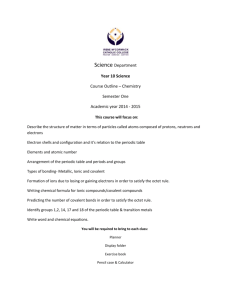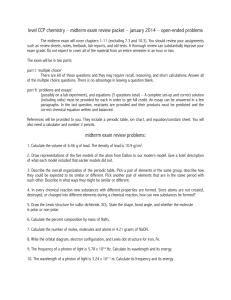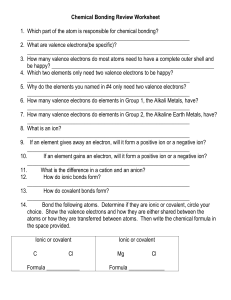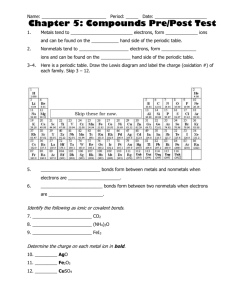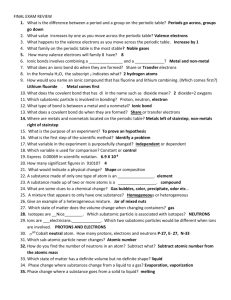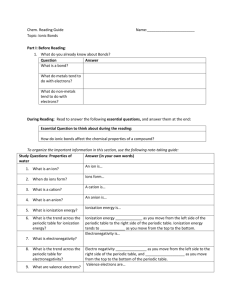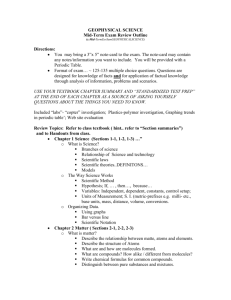Chemistry & Space
advertisement
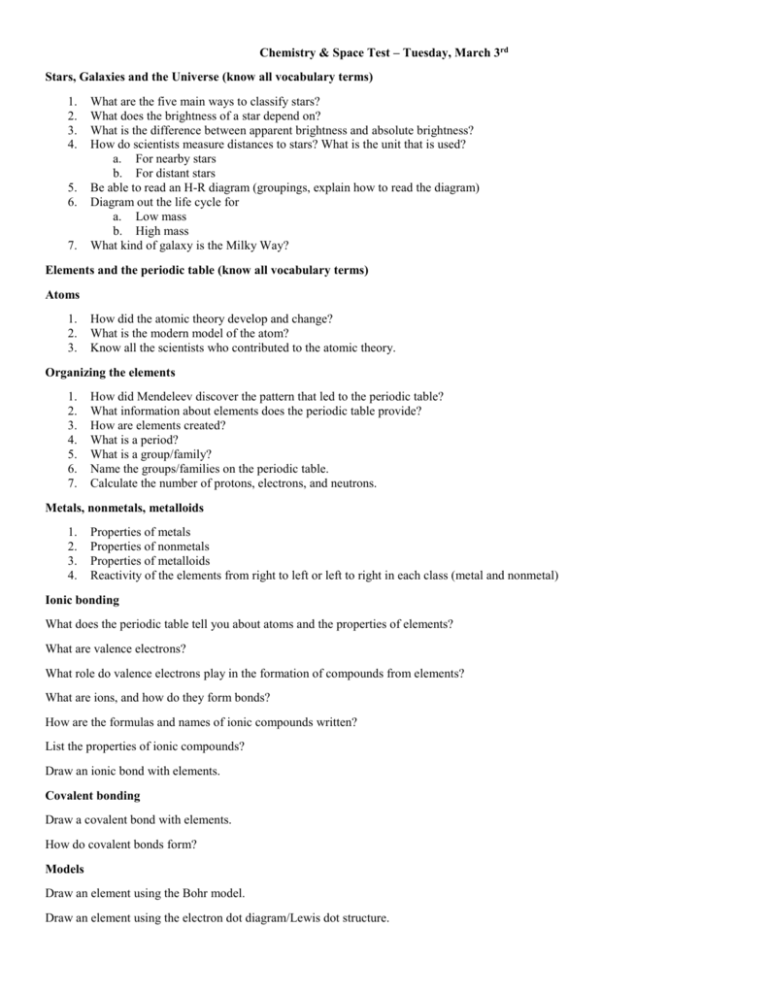
Chemistry & Space Test – Tuesday, March 3rd Stars, Galaxies and the Universe (know all vocabulary terms) 1. 2. 3. 4. 5. 6. 7. What are the five main ways to classify stars? What does the brightness of a star depend on? What is the difference between apparent brightness and absolute brightness? How do scientists measure distances to stars? What is the unit that is used? a. For nearby stars b. For distant stars Be able to read an H-R diagram (groupings, explain how to read the diagram) Diagram out the life cycle for a. Low mass b. High mass What kind of galaxy is the Milky Way? Elements and the periodic table (know all vocabulary terms) Atoms 1. 2. 3. How did the atomic theory develop and change? What is the modern model of the atom? Know all the scientists who contributed to the atomic theory. Organizing the elements 1. 2. 3. 4. 5. 6. 7. How did Mendeleev discover the pattern that led to the periodic table? What information about elements does the periodic table provide? How are elements created? What is a period? What is a group/family? Name the groups/families on the periodic table. Calculate the number of protons, electrons, and neutrons. Metals, nonmetals, metalloids 1. 2. 3. 4. Properties of metals Properties of nonmetals Properties of metalloids Reactivity of the elements from right to left or left to right in each class (metal and nonmetal) Ionic bonding What does the periodic table tell you about atoms and the properties of elements? What are valence electrons? What role do valence electrons play in the formation of compounds from elements? What are ions, and how do they form bonds? How are the formulas and names of ionic compounds written? List the properties of ionic compounds? Draw an ionic bond with elements. Covalent bonding Draw a covalent bond with elements. How do covalent bonds form? Models Draw an element using the Bohr model. Draw an element using the electron dot diagram/Lewis dot structure.

